Being a responsible car owner goes beyond just driving; it involves proactive maintenance and a fundamental understanding of your vehicle’s inner workings. For many, the mechanics of a car can seem like a complex puzzle. However, grasping the key mechanical parts of cars empowers you to make informed decisions about maintenance and repairs, ensuring your vehicle remains reliable and safe on the road.
It’s crucial to know which car parts pose a safety risk if they malfunction and which are relatively inexpensive to maintain. This guide aims to demystify the anatomy of your car, breaking down All The Parts Of A Car from the engine’s pistons to the tyres hitting the road. By exploring these components, you’ll gain a clearer understanding of how your car operates and how to keep it running smoothly for years to come.
Let’s embark on a journey through the essential systems and components that make up every vehicle on the road, from the engine room to the wheels that keep you moving.
Engine Components: The Heart of Your Vehicle
The engine is undeniably the heart of your car, converting fuel into the power that propels you forward. Understanding its core components is key to appreciating how your vehicle generates motion.
Cylinder Block and Pistons: The Powerhouse Foundation
At the foundation of the engine lies the cylinder block, a robust structure housing the cylinders. These cylinders are hollow chambers where combustion occurs. Within these cylinders, pistons, secured with piston rings, move up and down. This piston movement is crucial, as it transforms the explosive energy from fuel combustion into mechanical energy, ultimately driving the wheels. The precise interaction between the pistons and cylinders is the primary source of power generation in your car.
Crankshaft and Camshaft: Orchestrating Motion
Working in harmony within the engine are the crankshaft and camshaft. The crankshaft takes the linear, up-and-down motion of the pistons and converts it into rotational motion, providing the driving force for the vehicle. Simultaneously, the camshaft meticulously controls the timing of the engine valves, ensuring that they open and close at precisely the right moments for optimal combustion. This synchronized dance between the crankshaft and camshaft ensures smooth and efficient power delivery.
Intake and Exhaust Manifolds: The Breathing System
Imagine the intake and exhaust manifolds as the lungs of your car. The intake manifold draws in fresh air, vital for the combustion process within the engine. Conversely, the exhaust manifold expels the burnt gases produced after combustion, directing them out of the vehicle through the exhaust system. These manifolds are critical for optimizing engine performance, striking a balance between power and fuel efficiency. It’s important to note that electric vehicles (EVs), with their different propulsion systems, do not have intake and exhaust manifolds.
Powertrain and Gearboxes: Transferring Power to the Wheels
The powertrain is the system that transmits the power generated by the engine to the wheels, enabling your car to move. Gearboxes, also known as transmissions, are a vital part of this system, managing the engine’s power output for different driving conditions.
Different Types of Gearboxes: Manual, Automatic, and CVT
Gearboxes come in various forms, each offering a distinct driving experience:
Manual Gearboxes: Driver Control
Manual gearboxes put the driver in direct control of gear selection. By using a clutch pedal and gear stick, the driver manually engages and disengages gears. This provides a highly interactive driving experience, allowing drivers to adapt to diverse conditions like slippery roads, acceleration needs, and deceleration scenarios. Manual transmissions are favored by those who enjoy a more involved and connected feel while driving.
Automatic Gearboxes: Effortless Shifting
Automatic gearboxes prioritize ease of driving by automatically shifting gears without driver intervention. There’s no clutch pedal or gear stick operation required. Inside an automatic gearbox, a torque converter, a type of fluid coupling, facilitates smooth and seamless gear changes. Automatic transmissions are popular for their convenience, particularly in stop-and-go traffic and for drivers who prefer a less demanding driving experience.
CVTs: Seamless Acceleration
Continuously Variable Transmissions (CVTs) represent a more advanced gearbox technology. Utilizing a system of pulleys and belts, CVTs offer an almost infinite spectrum of gear ratios. This results in exceptionally smooth and continuous acceleration, without the distinct gear shifts felt in traditional automatic or manual transmissions. CVTs are known for optimizing fuel efficiency and dynamically adapting to changing driving demands, making them a sophisticated choice for modern vehicles.
Differential and Driveshaft: Distributing Power Evenly
Within the powertrain, the differential and driveshaft play distinct yet interconnected roles. The driveshaft acts as a conduit, transferring power generated by the transmission to the wheels. The differential, on the other hand, ensures that power is distributed evenly to the wheels, especially when turning. This differential action is crucial for smooth cornering, allowing the outer wheels to rotate faster than the inner wheels. Together, they ensure efficient and balanced power delivery to the wheels, contributing to controlled vehicle motion.
Clutch and Torque Converter: Engaging the Gears
The clutch and torque converter are essential components in managing gear engagement and power transfer. In manual transmissions, the clutch is controlled by the driver to engage and disengage gears, providing precise control over gear changes. In automatic transmissions, the torque converter takes over this role, smoothly transferring power from the engine to the transmission, facilitating seamless gear shifts and a smoother, more dynamic driving experience.
Fuel and Ignition Systems: Starting the Combustion
The fuel and ignition systems are responsible for delivering fuel to the engine and initiating the combustion process that generates power.
Fuel Injection System: Precise Fuel Delivery
Modern engines rely on fuel injection systems for optimal combustion. Fuel injectors precisely spray fuel into the engine cylinders, enhancing both engine efficiency and power output. Fuel injection technology replaced older carburettor systems, which were prone to issues like clogging. Fuel injectors offer superior fuel distribution, improved engine performance, and reduced emissions, contributing to a more efficient and environmentally friendly vehicle.
Spark Plugs and Ignition Coils: Igniting the Mixture
The ignition system, comprised of spark plugs and ignition coils, is critical for igniting the air-fuel mixture in the engine cylinders. Spark plugs generate the electrical spark needed to initiate combustion, while ignition coils amplify the voltage from the car’s electrical system to create a powerful spark. The synchronized operation of spark plugs and ignition coils is essential for efficient and rapid ignition, directly impacting engine performance, responsiveness, and fuel economy.
Throttle Body and Air Intake System: Controlling Airflow
The throttle body and air intake system work in concert to manage the airflow into the engine. The throttle body acts like a valve, controlling the amount of air entering the engine based on driver input through the accelerator pedal. The air intake system ensures that the air supplied to the engine is clean and free of debris. Together, they regulate the engine’s “breathing,” a critical factor in achieving optimal power, fuel efficiency, and overall engine performance.
Cooling and Lubrication: Maintaining Optimal Temperatures
To prevent overheating and ensure smooth operation, cars rely on cooling and lubrication systems. These systems regulate engine temperature and reduce friction between moving parts.
Radiator and Cooling Fans: Preventing Overheating
The radiator and cooling fans are the primary defense against engine overheating. The radiator dissipates heat from the engine coolant as it circulates through the system. Cooling fans enhance airflow across the radiator, further expelling excess heat, especially when the car is stationary or moving slowly. These components work together to maintain the engine at an optimal operating temperature, preventing damage and ensuring efficient performance.
Water Pump and Hoses: Circulating Coolant
Further contributing to engine temperature regulation are the water pump and hoses. The water pump circulates coolant throughout the engine and cooling system, absorbing heat as it flows. Hoses provide the pathways for the coolant to travel between the engine, radiator, and other cooling system components. This continuous circulation of coolant is vital for dissipating heat and maintaining a stable engine temperature.
EV Battery Cooler System: Thermal Management for Electric Vehicles
Electric vehicles utilize specialized cooling systems designed for their batteries and electric motors. The battery cooler, similar in function to a traditional radiator, dissipates heat from the battery coolant. Cooling systems in EVs also enhance airflow to expel heat. Maintaining optimal temperatures is particularly crucial in EVs to ensure the longevity, efficiency, and safe operation of the battery and electric motor.
Oil Pump and Oil Filter: Reducing Friction and Removing Impurities
The oil pump and oil filter are essential for engine lubrication and cleanliness. The oil pump circulates engine oil, coating engine components with a protective layer of lubricant to minimize friction between moving parts. The oil filter removes impurities and contaminants from the oil, keeping it clean and effective. Together, they extend engine life by reducing wear and tear and ensuring smooth, efficient operation.
Electrical System: Powering the Car’s Functions
The electrical system is the network that powers various functions throughout your car, from starting the engine to operating accessories.
Battery: The Initial Power Source
The car battery is the initial source of electrical energy, providing the power to start the engine and operate electrical components when the engine is off. Crucially, all cars, including EVs, have batteries, although EVs also have large traction batteries for propulsion. A failing or depleted battery will prevent the car from starting and may require replacement.
Alternator: Recharging and Powering
The alternator is responsible for converting mechanical energy from the engine’s rotation into electrical energy. This generated electricity recharges the battery while the engine is running and powers the car’s electrical systems, including lights, infotainment, and other accessories. The alternator also regulates voltage to maintain a consistent electrical supply, preventing battery overcharging and ensuring that electrical components receive the correct voltage.
Starter Motor and Solenoid: Initiating Engine Start
The starter motor and solenoid work in conjunction to start the engine. The solenoid acts as a switch, engaging the starter motor when the ignition key is turned. The starter motor then uses electrical energy to crank the engine, initiating the combustion process and starting the car. This coordinated action transforms electrical energy into the mechanical motion needed to get the engine running.
Wiring Harness and Fuses: Distributing and Protecting Electricity
The wiring harness is the network of wires that distributes electricity throughout the vehicle, connecting various electrical components. Fuses are strategically placed within the wiring harness to protect against electrical overloads. If excessive current flows through a circuit, the fuse blows, interrupting the flow of electricity and preventing damage to components. Together, the wiring harness and fuses ensure a safe and organized electrical power distribution system, safeguarding the entire electrical network.
Suspension and Steering: Ensuring a Smooth and Controlled Ride
The suspension and steering systems are crucial for ride comfort, handling, and vehicle control. They allow the car to navigate uneven road surfaces and respond to driver inputs.
Shock Absorbers and Struts: Dampening Bumps and Vibrations
Shock absorbers and struts are key components of the suspension system. Shock absorbers, typically one at each wheel, dampen shocks and vibrations from the road, resulting in a smoother ride by controlling vertical wheel movement. Struts, often found at the front and sometimes rear, combine structural support and shock absorption, enhancing vehicle stability. Together, they minimize the impact of bumps and uneven surfaces, providing a more comfortable and stable driving experience.
Control Arms and Bushings: Enhancing Stability and Handling
Within the chassis, control arms and bushings contribute to stability and smooth handling. Control arms link the suspension to the car’s frame, while bushings, made of flexible material, provide cushioning and flexibility at the control arm joints. This combination absorbs road imperfections, maintains proper wheel alignment, and ensures a balanced and controlled ride.
Power Steering Pump and Rack: Effortless Steering
The power steering pump and rack are essential for responsive and easy steering. The power steering pump generates hydraulic pressure, which is then used by the steering rack to assist in turning the wheels. The steering rack converts this hydraulic pressure into controlled motion, making steering significantly easier, especially at low speeds. Together, they provide precise and smooth maneuverability, enhancing driving ease and control.
Braking System: Bringing the Car to a Stop
The braking system is arguably the most critical safety system in a car, responsible for slowing down or stopping the vehicle effectively and reliably.
Brake Pads: Creating Friction for Deceleration
Brake pads are friction components, typically made of composite materials, that press against the brake rotors. This friction converts kinetic energy into heat, slowing down the rotors and thus the wheels. Brake pads are designed for robust and reliable braking performance when the brake pedal is applied. However, they are subject to wear over time, especially with frequent or hard braking, and require periodic replacement.
Brake Calipers: Applying Pressure to the Pads
Brake calipers are positioned around the brake rotors and contain pistons. When hydraulic pressure is applied (by pressing the brake pedal), these pistons clamp the brake pads against the rotor. This clamping action generates the friction necessary for controlled deceleration. The precision of the brake calipers is crucial for responsive and reliable braking performance, directly impacting overall driving safety.
Exhaust System: Managing Emissions and Noise
The exhaust system is responsible for safely routing exhaust gases away from the engine, treating harmful emissions, and reducing engine noise.
Catalytic Converter: Reducing Harmful Emissions
The catalytic converter, a key component in modern exhaust systems, reduces harmful gases produced by the engine. Through a chemical process called catalysis, it converts pollutants like carbon monoxide, hydrocarbons, and nitrogen oxides into less harmful substances, primarily carbon dioxide, water, and nitrogen. This significantly reduces vehicle emissions, contributing to cleaner air and environmental protection.
Muffler and Resonator: Quieting Engine Noise
The muffler and resonator work together to control and reduce exhaust noise. The muffler is the primary noise reduction component, using internal chambers and passages to dampen sound waves. The resonator further fine-tunes sound frequencies, adjusting the exhaust note and minimizing unwanted sounds. A well-functioning muffler and resonator contribute to a quieter and more comfortable driving experience, while still allowing the driver to hear engine feedback.
Oxygen Sensors: Monitoring Exhaust Gases
Oxygen sensors are positioned in the exhaust system to monitor the oxygen levels in the exhaust gases. This data is sent to the engine control unit (ECU), which uses it to fine-tune fuel injection. By optimizing the air-fuel mixture based on oxygen sensor readings, the engine achieves more efficient combustion and reduced emissions. Oxygen sensors play a critical role in engine management and emissions control.
Interior Components: Comfort and Convenience Inside
The interior components of a car are focused on driver and passenger comfort, convenience, and safety within the cabin.
Seats & Seat Belts: Occupant Comfort and Safety
Car seats are designed for comfort and support during driving, available in various materials, styles, and configurations. Seat belts are essential safety devices, securing occupants in their seats during travel and in the event of a collision. Modern seat belts often incorporate pretensioners, which tighten the belt in a crash, and force limiters, which reduce the force applied to the occupant’s chest.
Dashboard & Steering Functions: Driver Information and Control
The dashboard serves as the driver’s command center, displaying crucial information such as speed, fuel level, engine temperature, and warning lights. It provides a comprehensive overview of the vehicle’s status. The steering wheel integrates power-assisted steering and controls for various functions, including turn signals, windshield wipers, headlights, and often multimedia systems, putting essential controls within easy reach of the driver.
Exterior Components: Protection and Aesthetics
The exterior components of a car provide protection from the elements, contribute to aerodynamics, and define the vehicle’s visual appearance.
Features & Controls on Doors: Access and Convenience
The features and controls integrated into car doors enhance convenience and safety. Common door features include electric window controls, door locks (manual or power-operated), and mirror adjustments (manual or electric). Some vehicles also offer advanced features like keyless entry systems, power-operated doors, and integrated speakers, contributing to a more user-friendly and streamlined driving experience.
Wheels and Tyres: Connecting to the Road
Wheels and tyres are the crucial interface between the car and the road surface, impacting handling, grip, ride comfort, and safety.
Types of Tyres and Their Functions: Matching Tyres to Conditions
| Type of tyre | Function |
|---|---|
| Summer tyres | Designed for warm weather, providing optimal grip and handling in both dry and wet conditions during warmer months. |
| Winter tyres | Engineered for cold temperatures, featuring specialized tread patterns and rubber compounds for enhanced traction on snow and ice. |
| All-season tyres | Versatile tyres designed to provide a balance of performance in various conditions, offering reasonable traction and durability in both wet and dry weather, and light snow. |
| Performance tyres | Developed for sporty driving, prioritizing exceptional handling, grip, and responsiveness, especially at higher speeds and in cornering. |
| Off-Road tyres | Built for challenging terrains such as mud, gravel, and rocks, featuring aggressive tread patterns and reinforced sidewalls for maximum traction and durability off-pavement. |
| Run-flat tyres | Equipped with reinforced sidewalls, allowing drivers to continue driving at reduced speeds for a limited distance even after a puncture, preventing immediate flat tyres. |
| Touring tyres | Focused on providing a smooth and comfortable ride, ideal for long-distance journeys, with low road noise, good handling, and extended tread life. |
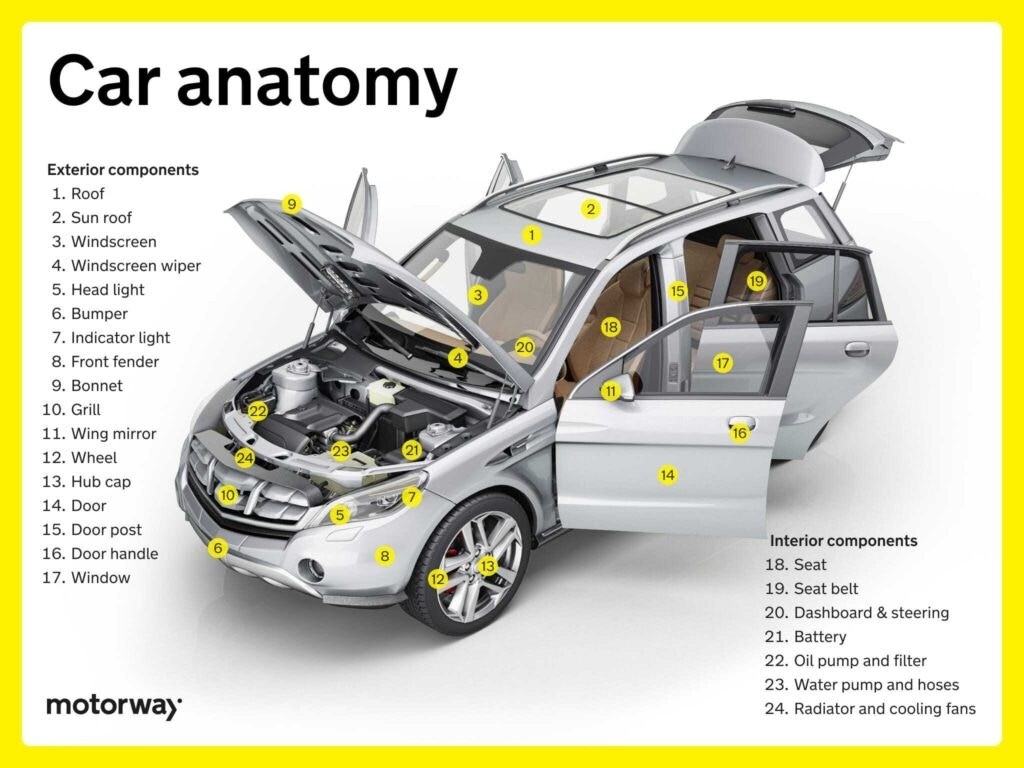
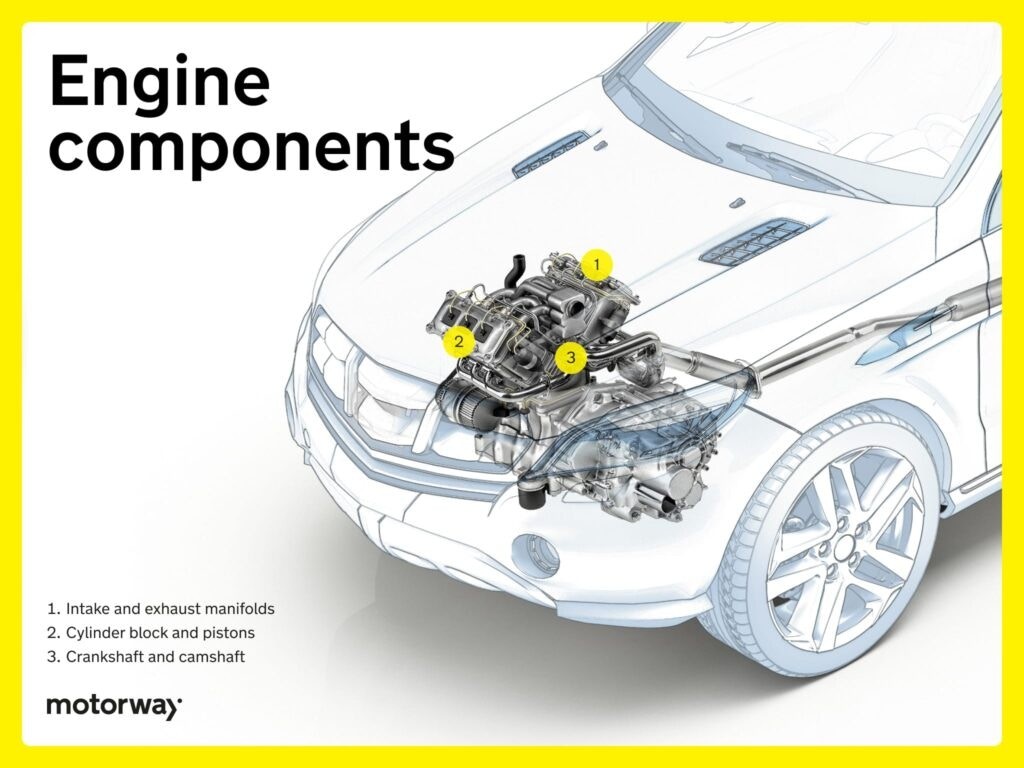
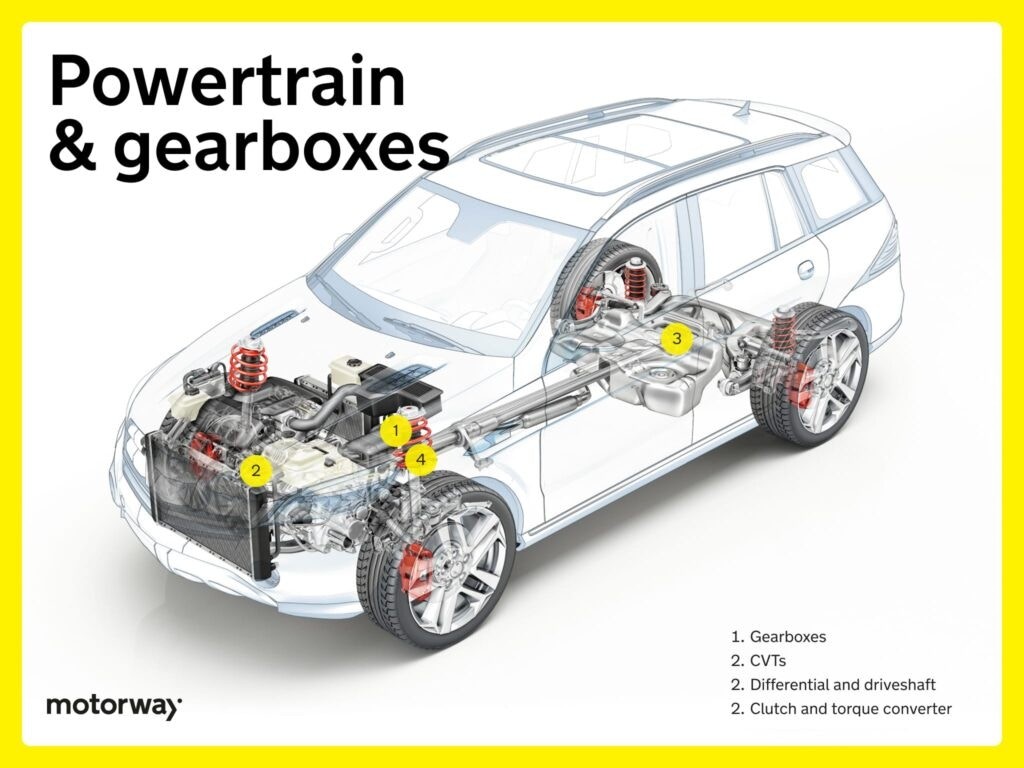

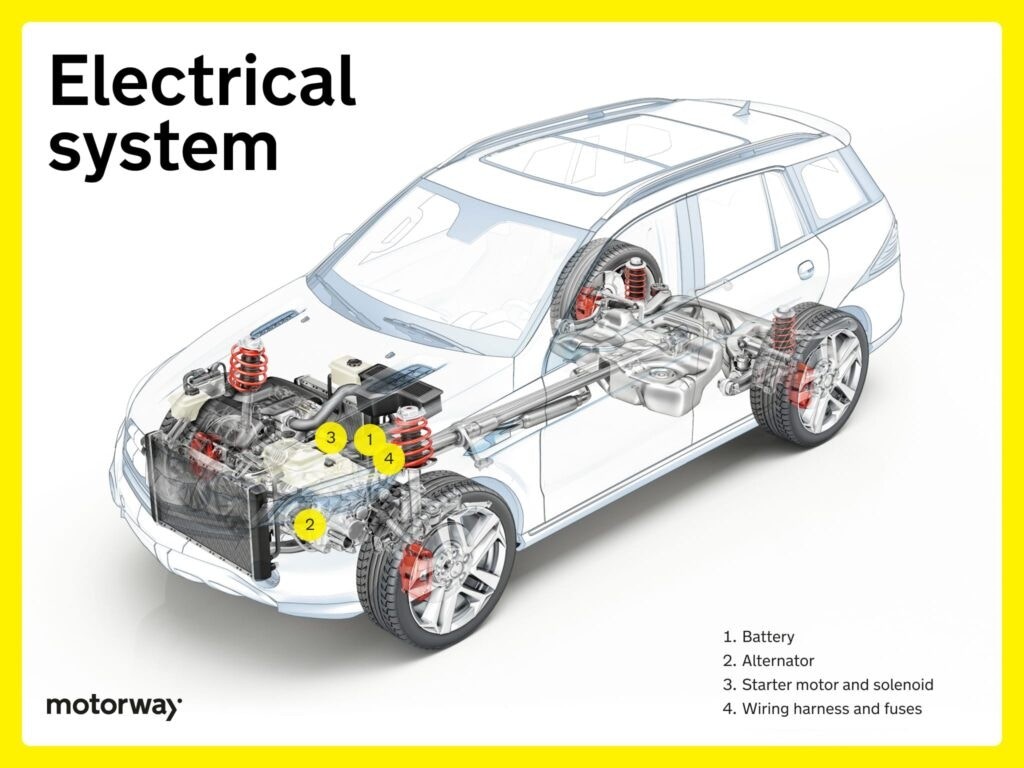

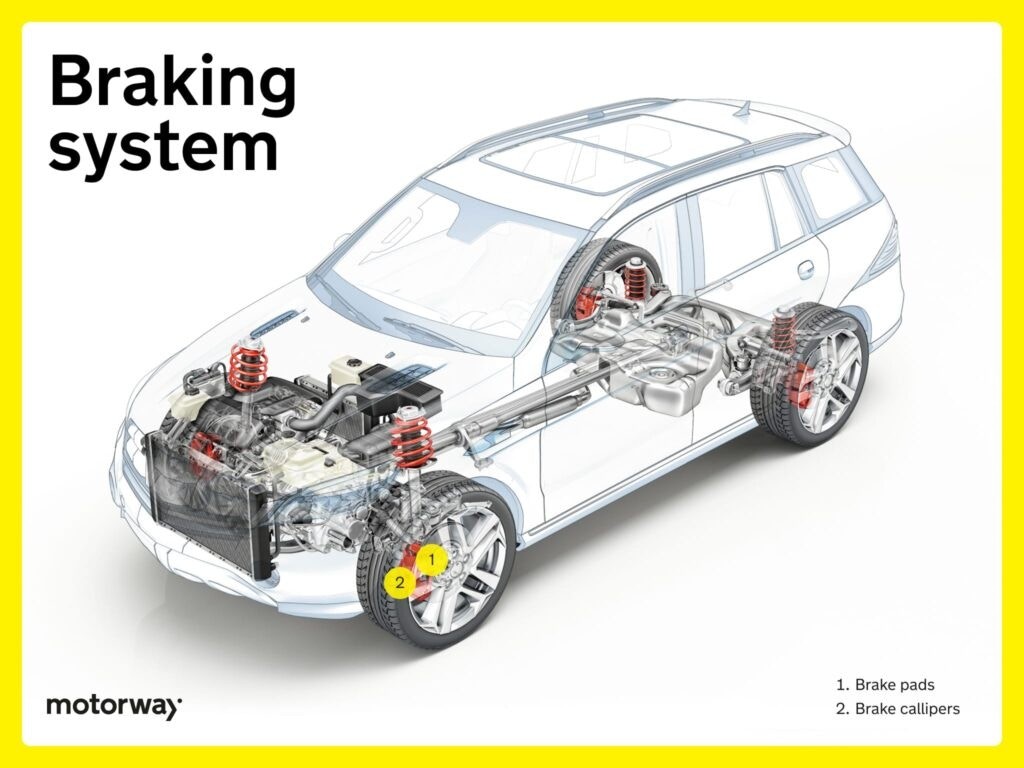
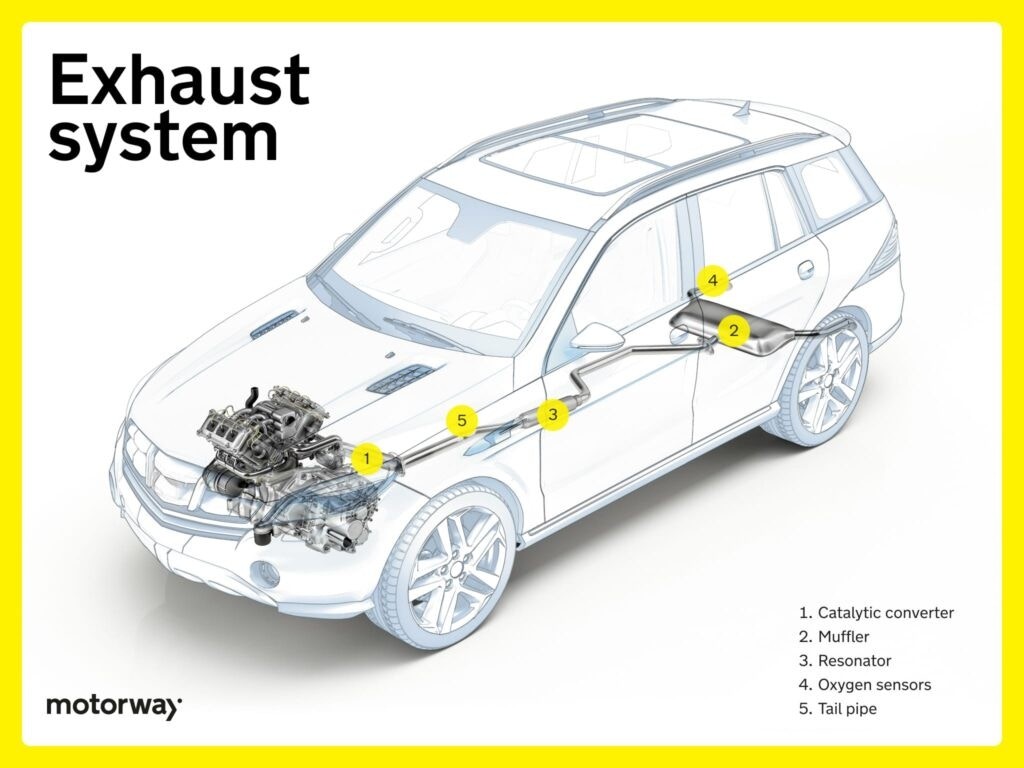
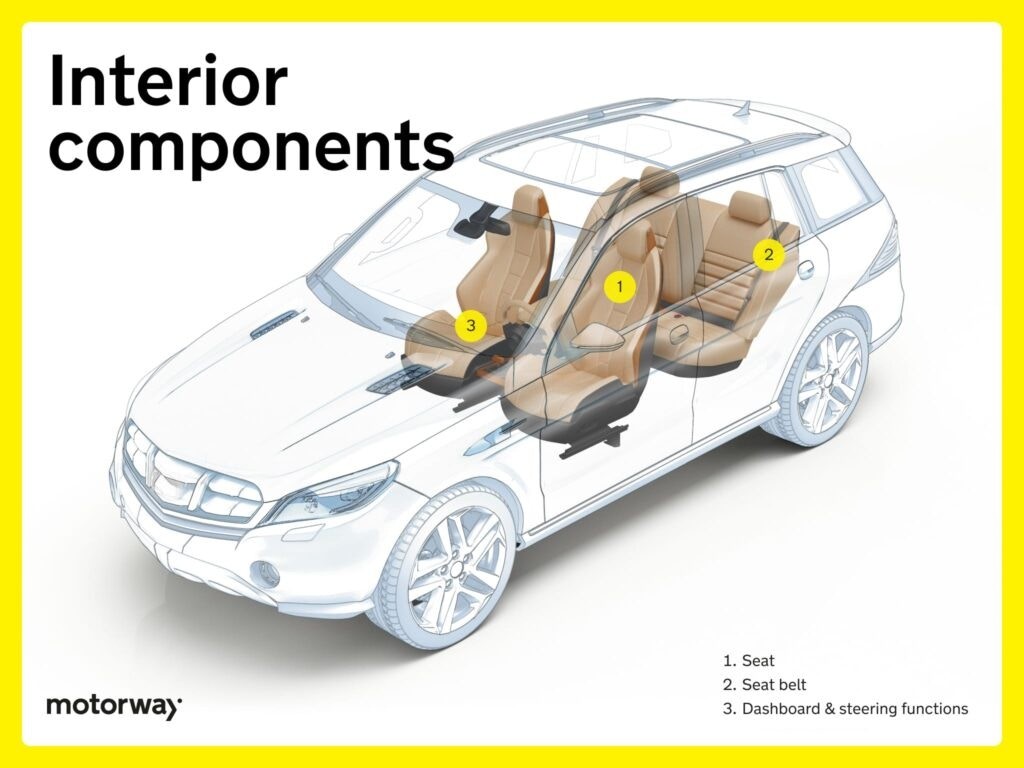
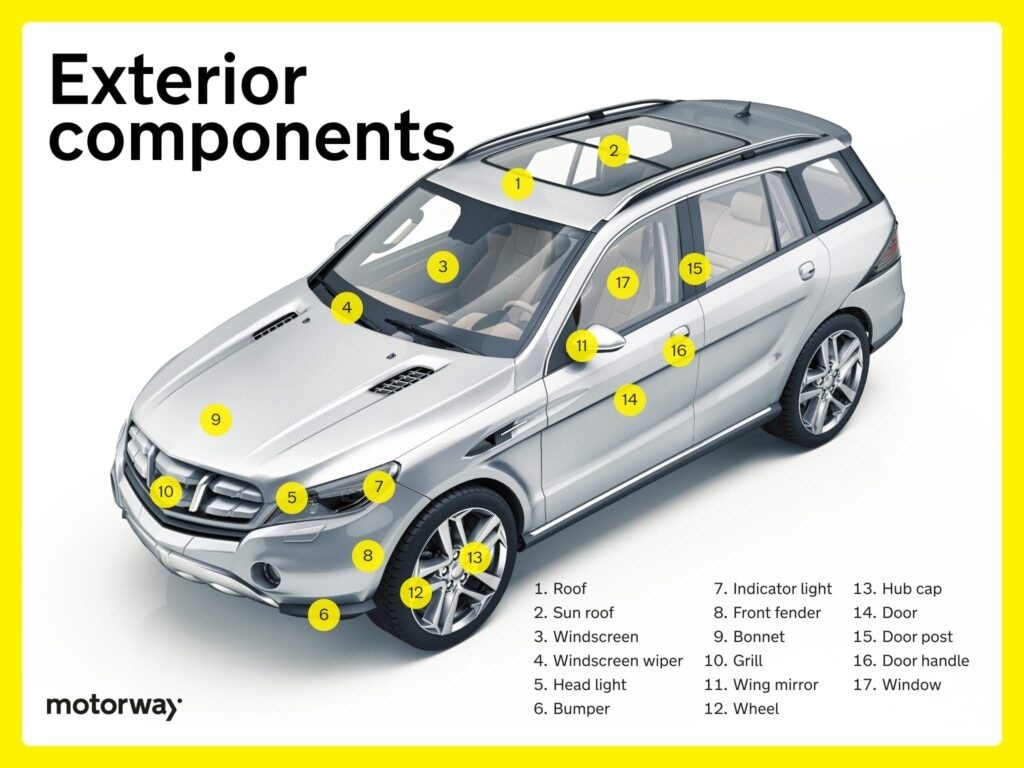
Wheel Construction Guide: Alloy vs. Steel Wheels and Designs
Wheel construction varies, affecting weight, strength, and aesthetics:
- One-piece construction: The wheel is made from a single piece of material, typically alloy or steel. Common for both alloy and steel wheels.
- Two-piece construction: Composed of two main parts: the center and the outer rim, bolted or welded together. Often found in performance or custom wheels.
- Three-piece construction: Features three separate pieces: the center, outer rim, and inner hoop. Offers greater customization, popular in aftermarket wheels.
- Forged construction: Made from a solid piece of metal compressed under high pressure, resulting in a stronger and lighter wheel compared to cast wheels, often used in high-performance applications.
- Multi-piece construction: Combines multiple components for versatility in sizing and customization.
Wheel material also matters:
- Alloy wheels: Made from a mix of metals, often aluminum or magnesium. Lighter than steel, improving heat dissipation and enhancing appearance.
- Steel wheels: Constructed from steel, known for robustness and durability. Heavier than alloy wheels but more cost-effective and suitable for rugged conditions.
Tyre Pressure Monitoring System (TPMS): Maintaining Correct Inflation
The TPMS is a safety system that continuously monitors tyre air pressure. Sensors in each tyre transmit real-time pressure data to the vehicle’s computer. If tyre pressure deviates from the recommended levels, the TPMS alerts the driver, promoting safety, fuel efficiency, and extended tyre lifespan by ensuring proper inflation.
FAQs about Car Parts
What parts are under a car?
Beneath a car, you’ll find essential systems including the engine, transmission, suspension system, exhaust system, driveshaft, differential, and fuel system. These parts under a car work collaboratively to ensure vehicle operation and performance.
How many car parts are on a car?
The total number of car parts on a car can be surprisingly high. Modern vehicles can contain over 30,000 individual parts, encompassing various systems and intricate components. Electric vehicles generally have fewer parts due to simpler powertrains relying on batteries rather than complex mechanical systems.
What are the important parts of a vehicle?
Key important parts of a vehicle include the engine, transmission, braking system, steering system, suspension, and electrical system. Each of these plays a vital role in ensuring vehicle safety, performance, and reliability.
What parts of a car can be sold separately?
Certain parts of a car can be sold separately, including engines, transmissions, body panels, doors, wheels, and specific electrical components like alternators and starters. The demand and availability of these parts vary depending on vehicle model and market conditions.
Why is there a shortage of car parts?
Shortages of car parts can occur due to various factors, including disruptions to global supply chains, increased demand for specific components, manufacturing challenges, and unforeseen global events that impact production and distribution networks.
Need to Sell Your Car?
Want to learn more about car ownership, maintenance, and the process of selling your vehicle? Explore our comprehensive guides here, covering topics from low emission zones and vehicle taxes to number plate changes and part exchange.